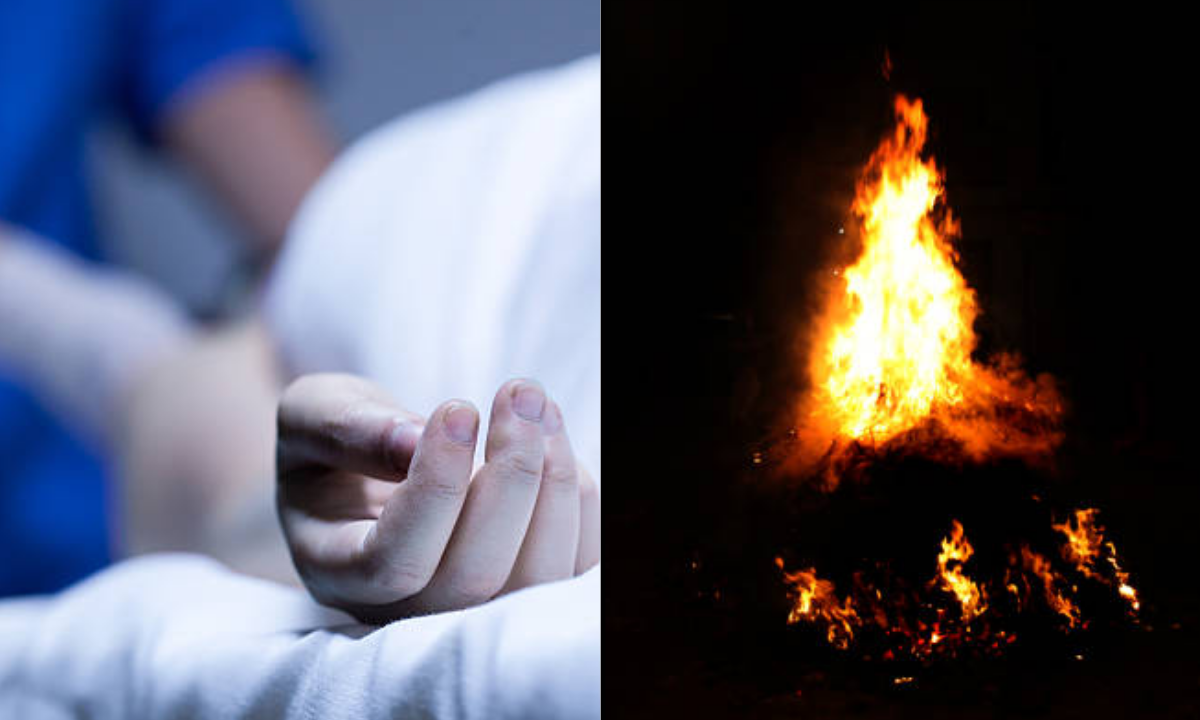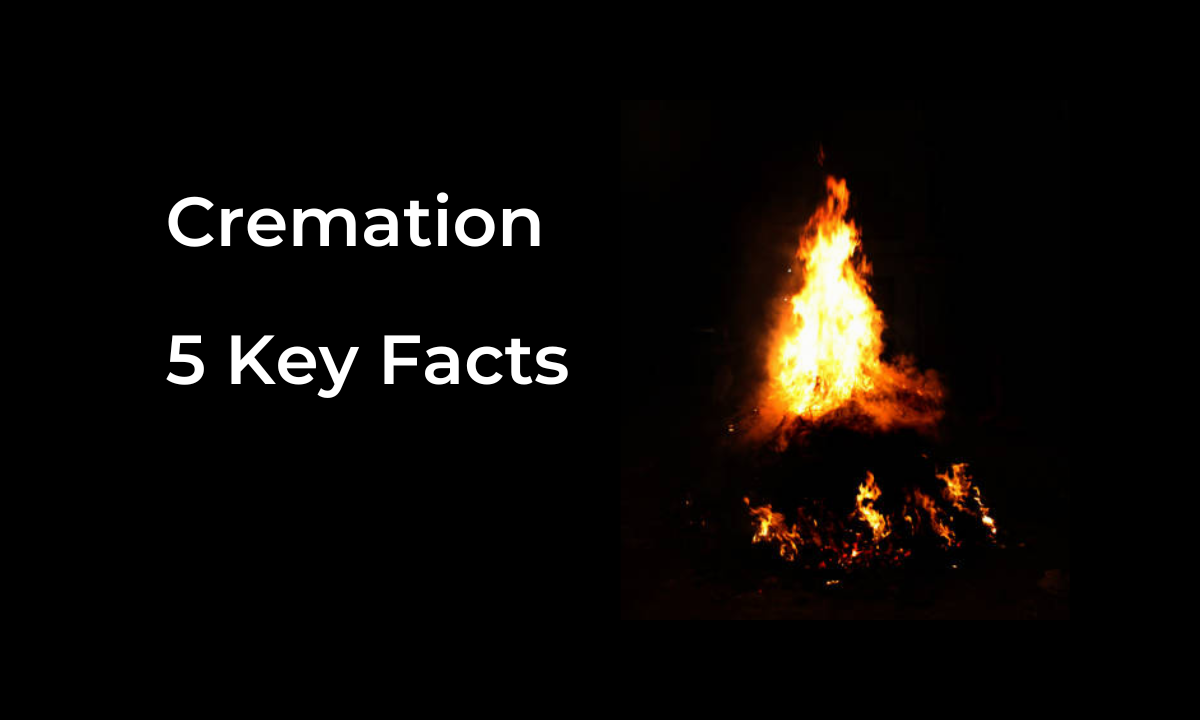Choosing between cremation and burial is a very personal decision that many families find difficult to make. Cremation, on the other hand, has grown in popularity in recent years because of its flexibility, low cost, and environmental friendliness. Understanding why cremation may be the best option for you or a loved one is crucial when making funeral plans. Cremation services in Noida, for example, offer families a range of options tailored to their needs and preferences, making it easier to plan a meaningful farewell.
Cremation is commonly preferred due to its simplicity and the diversity of ways to honor a loved one. Cremation allows for additional personalization, such as scattering ashes in a chosen location or preserving them in a memorial urn. Furthermore, cremation is usually less expensive than traditional burial, and many appreciate the reduced environmental impact. In this blog, we’ll look at five important facts about cremation, address frequently asked questions, and refute myths to help you make an informed decision.
What is Cremation?
Cremation is the process of converting a body to ashes at high temperatures, usually in a specialized furnace called a crematorium. This process respects and dignifies a loved one’s remains, offering families a variety of final resting options. Cremation services in Delhi are accessible for people who want to memorialize their loved ones flexibly and uniquely, whether through traditional ceremonies or inventive monuments.
Following cremation, the ashes—also known as “cremains”—are gathered and placed in an urn or receptacle chosen by the family. These ashes can be retained at home, buried in a memorial garden, spread in a meaningful location, or incorporated into unique tributes like jewelry or artwork. Cremation services in Delhi offer families several options for commemorating the life of their loved ones, allowing for both simplicity and personalization based on particular choices and traditions. This emerging trend is becoming a popular choice for end-of-life plans because of its flexibility and emotional relevance.
The Cremation Process

The cremation process includes several critical steps, beginning with the preparation of the body and concluding with the return of the ashes to the family.
Preparation: The body is deposited in a tiny container, typically made of wood or cardboard, and transported to the crematory. Before cremation, any non-removable items, such as medical equipment, are carefully removed.
Cremation: The body is then placed in a cremation chamber at temperatures ranging from 1,400 to 2,000 degrees Fahrenheit, where it is reduced to bone fragments. The entire operation normally takes 2-3 hours.
Collection: After cremation, the remains are left to cool. All metallic items are removed, including dental fillings and implants. To maintain consistency, the residual bone fragments are ground into fine ashes.
Return: The ashes, now called cremains, are carefully placed in an urn or container chosen by the family. The ashes are subsequently returned to the family, who can decide how and where to honor their loved one’s memory.
Advantages of Cremation
Cremation has multiple significant benefits, making it an increasingly popular option for families looking for a meaningful and adaptable way to memorialize their loved ones. Some of the primary benefits are:
Affordability: Cremation is sometimes less expensive than traditional burials since it eliminates the requirement for a burial plot, casket, and monument. This makes cremation less expensive for many families.
Flexibility: Cremation allows us greater freedom in planning memorial ceremonies and picking a final resting place. Families might opt to have a ceremony before or after cremation, and the ashes can be scattered, buried, or kept at home in an urn. This flexibility allows loved ones to schedule services at their own leisure.
Environmental Considerations: Cremation is usually regarded as a more environmentally friendly alternative to traditional burial because it eliminates the need for embalming chemicals and saves land.
Portability: When families migrate, ashes may be readily transported, allowing them to keep their loved ones close by wherever they go.
Simplicity: Many people prefer cremation because it is simpler to organize than traditional burial.
The Environmental Impact of Cremation
While cremation services are widely perceived as a more environmentally friendly alternative to traditional burial, it is vital to consider the whole environmental impact. Traditional burials typically include the use of embalming chemicals, non-biodegradable caskets, and large plots of land, all of which can have a detrimental environmental impact. Cremation, on the other hand, eliminates these issues, making it a more environmentally responsible choice for many families.
Cremation, on the other hand, raises its own set of environmental problems, including the release of carbon dioxide and other pollutants throughout the process. As a result, many crematoriums are implementing greener methods, such as using energy-efficient furnaces or offering carbon offset programs, to lessen their environmental impact. Furthermore, newer, more ecologically friendly processes, such as water cremation (also known as alkaline hydrolysis), are gaining popularity since they significantly reduce emissions and the total environmental impact. As more ecologically friendly options emerge, cremation becomes a more attractive alternative for those looking to decrease their environmental impact.
Cremation Myths
There are numerous myths and misconceptions about cremation that may cause some people to hesitate. Let’s clear up some frequent misunderstandings.
Myth 1: Cremation requires no funeral service.
Many individuals assume that choosing cremation eliminates the chance of holding a traditional funeral. In actuality, families might arrange a viewing, memorial service, or religious ritual both before and after the cremation. Cremation provides flexibility, allowing families to remember their loved ones in any way that feels most important.
Myth #2: Ashes are blended with others.
One prevalent fear is that ashes may become mingled with others during the cremation process. Cremation chambers, on the other hand, are meant to handle one body at a time, with tight protocols in place to keep the ashes completely isolated from others. Families can be confident that they will only get their loved one’s ashes.
Myth 3: Many religions prohibit cremation.
While certain religions have historically opposed cremation, many people now regard it as a suitable burial ceremony. Cremation is permitted, if not desired, for funeral services in many Christian denominations, as well as in religions such as Buddhism and Hinduism.
Conclusion
Cremation is a popular choice among many families because of its low cost, flexibility, and environmental benefits. As you evaluate end-of-life options, understanding the cremation process, and its benefits, and eliminating common myths will help you make an informed decision that meets your family’s needs and values. Cremation services in Bangalore, for example, provide a range of options for properly and deeply honoring loved ones. Cremation offers a diverse alternative to traditional burial, with options ranging from inexpensive to personalized memorials.
When planning for yourself or a loved one, you must analyze all available options and select the one that best meets your needs. Cremation is a dignified and respectful way to honor life while taking into account a variety of personal and environmental factors. With services like cremation services in Bangalore, families may choose a proper way to remember their loved ones in a way that seems both acceptable and meaningful.
Kaashimukthi is a funeral services provider in Bangalore that assists grieving families by arranging the entire funeral process from rites to cremation burial with compassion and care. Contact us +91 9845819660

